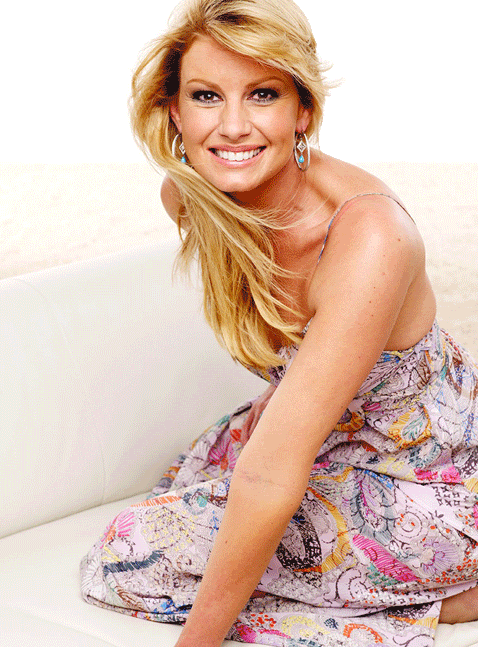
It is hard to see all the differences when the image is moving so here is it side by side

I found this image on the website www.tinyurl.com/292q5e. This was a really good site as the article posted on July 16th 2007 goes on to discuss in detail everysingle thing that has been retouched in Faith Hills picture. There have been 11 significant changes.
I cannot understand where the obsession for a pefectly clipped, unrealistic image comes from. It seems to have started with taking out obvious imperfections often ocuring when taking a photo; red eyes, reflections, shadows etc. Since then retouching has failed to see the line more often than not making sure no image is published that does not have perfect skin with absolutely no imperfections, no lines, no uneven skintone, no strand of hair out of place. And it dosen't stop there; no inch of flesh can be out of place, big waists are made smaller, legs and arms thinner and longer and so on and so on. Untill the person is completely different yet the image considered "perfect". When did the humen body become impefect?
The media is constantly sending out "pefected" images with nothing to indicate to the untrained eye that they have been retouched. Individuals are looking at these images and thinking that is how they are suposed to look, that is beautiful and glamorous; it must be it's on the cover of a magazeine? And they are dieting and having plastic surgery etc in order to look more like these fake, over perfected images. I believe there is a connection between self-esteem issues, eating disorders such as anorexia and buliema and the reprentation of excessively retouched images.
Yes audience theory such as the epidermic needle theory can be used to challenge my above statement, but there is very little awareness that these images aren't real, and therefore they are being viewed passively. Only a small percentage of people are looking at perfected images and thinking "what a good piece of retouching". A horrifying number of young women in partcular take them to be an indication of how they should look, and this is leading to problems. What is so wrong with seeing an untouched image?


